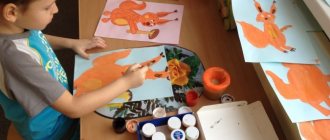Why do we get animals?
Man domesticated wild animals thousands of years ago, and from that moment on, the life of our ancestors was closely connected with them. However, it should be noted that the role of animals in people’s lives has changed greatly: from using them as a living instrument to literally elevating them to the status of an equal member of the family.
Modern families most often get animals to enjoy communicating with them, as a fashion or status element, for protection or use in work, often, consciously or not, animals replace the missing family member.
Usually people are confused if you ask them why they need a pet. This happens because our emotional impulses are often difficult to describe in words, but the situation with animals is exactly this: we get them to expand our social circle, not to feel lonely, to have someone nearby in whom we can be confident, to feel love and gratitude to you.
Often families answer that they got an animal for their child. We believe that caring for a pet will teach a child responsibility and make him more sociable and kind. But is this so and under what conditions will real friendship develop between a child and his pet?
Children and animals: safety precautions
It’s done: a child and a pet live together! As we have already said, it is important not to separate them, but to give them the opportunity to communicate and interact. A baby under one year old can be allowed to pet your pet under your supervision and play catch with him. After a year, the child can use special toys for animals - balls, bows on a string, squeakers. And after 2 years, you can and should involve your baby in caring for your pet.
A small child, especially one prone to allergies, should not feed aquarium fish. Many foods, such as daphnia and gammarus, can be very irritating.
Here's what you need to consider to make communication between a child and an animal not only enjoyable, but also safe:
- Vaccinate your pet regularly and show it to the veterinarian - some infections can be transmitted from animals to humans;
- Never leave a small child and a pet alone, even if they have been friends for a long time. Sudden aggression can occur on both sides;
- Explain to your child that the animal should not be teased, distracted from food, hugged or disturbed sharply, or woken up during sleep;
- If you suspect that your baby is allergic to a pet, immediately consult a doctor and get the necessary tests done. If the allergy is confirmed, you may have to part with the animal. But sometimes the problem can be solved with careful hygiene, daily cleaning and special air purifiers;
- Be prepared for the fact that the animal may perceive the child as lower in the family hierarchy and behave accordingly. As a rule, you can establish the right rules with the help of a specialist (canine handler, zoopsychologist), but if you feel a real threat from an animal, consider “retreat routes.”
If there are allergy sufferers in the family, initially choose “safe” breeds of animals. Among dogs these are Maltese dogs and Yorkshire terriers, among cats - Sphynxes and Orientals.
What are the benefits of pets for children?
As a rule, children are very drawn to pets, communication with animals changes them for the better: it is not for nothing that in Russia and abroad animal-assisted therapy (therapy using animals) is used for the development and education of children and for conducting correctional classes. What are the benefits of contact with animals?
Animals develop a child's powers of observation
The behavior of domestic animals is simpler than ours, so it is easier for a child to notice the characteristics of pets, their habits and reactions to new things. Usually, kids are happy to watch their pets, often sharing their observations with their elders: “Mom, I gave the hamster a napkin, and at night he made a nest out of it!”
Animals teach children to recognize emotions
It is easy to understand by your pet's behavior when he is scared or interested, sad or happy. Such a living “atlas of emotions” allows the baby not only to learn to closely monitor a friend’s condition, but also to better understand his own feelings, and it is precisely in the awareness of emotions that lies the key to their control.
With the help of animals, a child improves communication skills and learns compassion
Building interaction with an animal teaches a child to better understand others and to be attentive to those who are weaker. Research shows that children who have a pet at home are more attentive to other children, their empathy is better developed, and communication difficulties are less likely to occur.
Animals reduce stress
Research confirms that the company of a pet who will definitely not criticize makes children feel more confident and less worried. For example, American researchers noticed that children learn new words better in the presence of a dog than one on one with an experimenter. Some parents share their experience that children are more willing to read aloud to their pets.
Animals teach children responsibility
Taking care of a cat or dog is a lot of work, which, of course, is beyond the capabilities of a small child, but even a preschooler can cope with simple tasks, for example, changing the water in a bowl or replacing the filler for a tray. It is important for children to have daily tasks at home that they can complete independently. Caring for a pet can be such a challenge.
Animals increase family physical activity
A mandatory walk with the dog may sometimes cause unpleasant emotions, but it becomes a regular physical activity. In cities, even children tend to lead a sedentary lifestyle, so such a responsibility will only benefit all family members.
Animals teach children to cope with difficult events
Unfortunately, the life of pets is not long, so older children will certainly face the loss of a pet. Some may say that this is unnecessary stress for the baby, but, on the other hand, acquaintance with death will come sooner or later, and the loss of an animal is still easier to bear than the loss of a relative or friend.
Animals become the context for developmental activities
In daily care and training, you can include elements of exercises that develop memory, attention and thinking in children. By observing your pet, you can find similarities with other animals, note individual traits, count cups of food; very young owners can develop speech by repeating the sounds of their pets. You can come up with many other exercises that will certainly interest your baby, because it concerns his pet!
Animals teach respect for nature
Properly organized communication between a child and an animal contributes to the development of a caring attitude towards living beings and nature in general. The child learns that all living things have feelings, understands how you can and cannot communicate with animals, and becomes more attentive to the world around you.
Animals open up new possibilities
Communities of animal owners are always very diverse interest groups. Literally every city hosts exhibitions and competitions, lectures and master classes, where even a child can acquire a new hobby and new friends with similar interests. Or maybe this will be a hobby for the whole family?
Pets contribute to the development of children: kids learn more about behavior and emotions, become more attentive and responsible, and broaden their horizons. Connecting with nature reduces stress and teaches a child to care about the world around him.
Why shouldn't you have animals?
Despite all the benefits of owning a pet as a companion for children, not all families should have a pet. When purchasing animals, we take full responsibility for their life, health and comfort, and providing the necessary conditions is not always easy. Often, buying an animal is an impulsive decision that the whole family may later regret. Why shouldn't you have animals?
Contraindications for health
Allergies, susceptibility to various diseases and other health problems in any family member can be a serious obstacle. Sometimes allergic reactions can be stopped, but in some situations, contact between a child and an animal can become dangerous. Before purchasing an animal, the whole family should make sure there are no health contraindications.
Strong reluctance of one of the family members
Let's imagine that the head of the family really doesn't like dogs, and you buy a pug because you think that over time they will get along. A month or two passes, and the husband still gets irritated as soon as he sees the dog. Was it worth the risk of purchasing a pet in the hope that the rest of the family would get along with it later? Isn't it better to choose a pet that suits the character and preferences of the whole family?
Unstable period of life
A rented apartment, a planned job change, or a move is not the best time to bring a pet into your home. If you don’t have the energy, time and money even for current tasks, you shouldn’t take an animal in the hope that it will relieve stress. In such a situation, stress can only increase.
Lack of time, experience or desire of parents to teach the child the basics of safe and humane treatment of animals
Although the child will learn many aspects of communicating with an animal on his own, the first times they interact should be under parental supervision. Children cannot always calculate force, understand a pet’s language, or assess the safety of their actions.
A psychologist tells how to teach a child to communicate with animals:
There are many reasons why you should not have animals at home: medical contraindications, lack of consensus among all family members, unstable period of life, lack of time. However, in addition to purchasing animals, there are many other ways to interact with them to benefit your child.
Are there any alternatives to purchasing?
It also happens that it is completely impossible to have a pet for a child, but the child is very drawn to animals. Remember that purchasing an animal is not always the only possible option: ask your friends if it is possible to join them for a walk with the dog, visit exhibitions and competitions, go to a zoo, reserve or ecological settlement, older children can be enrolled in training courses, in a youth club zoologists or riding school. However, do not forget about safety and do not allow your child to come into contact with unfamiliar animals, as this may result in injury.
Recently, many petting zoos have been opening in cities, where you can feed and pet different animals. Good institutions (usually located at zoological centers) can give the child the opportunity to interact with animals. Beware of places where no one controls or regulates the interaction of children with pets, and the animals themselves do not look healthy and calm. In such zoos, you will not only endanger your child, but also introduce him to cruelty to animals. For the same reason, circuses are not suitable for getting to know wildlife: in them, four-legged performers are in unnatural conditions and are subject to constant stress.
Choosing a pet
If you do decide to get your own pet, take the time to carefully study what type and breed of animal is right for your family and allow children to actively participate in the selection and preparation process, because this part can also teach the child a lot: take them with together to meet breeders, to exhibitions, and read the necessary literature together.
Dogs are undoubtedly the most difficult pets to care for. However, it is from them that we receive the most emotional support; it is among dog lovers that various activities with the participation of four-legged friends are most developed (dancing with dogs, exhibitions, grooming, various types of training, skiing, competitions in catching plates and balls, etc.). d.) We recommend getting a dog for active families who are open to new hobbies and acquaintances, who are attracted to active recreation and those who have time to raise and care for their pet. When choosing a dog, pay special attention to its character: study the description of the breed and the behavior of specific candidates. If possible, ask a specialist for help in choosing a pet, because cowardly and aggressive dogs can be dangerous for all family members.
Cats are more independent animals, they require less interaction with humans and their own kind, and they require less time for care. However, it should be remembered that, unlike dogs, cats are more attached to a place, so it is more difficult for them to endure moving and temporary foster care. In addition, cats often cause allergies, which can be a serious obstacle.
Birds (especially parrots) can teach a child a lot. They have a variety of behavior, some of them are very social and are excellent at remembering their owner. The noise the birds make and the size of the cage space may be a problem.
Lately, more and more often rodents are becoming children's first pets. They are social animals that are fun to watch, many are trainable, require relatively little space and time to care for, and have a shorter lifespan than cats and dogs.
Turtles often end up in families with children. Their disadvantage is that they no longer show their emotions so clearly and clearly and do not demonstrate affection for their owner, but, nevertheless, they are interesting and easy to care for.
An interesting choice could be purchasing crabs, snails or insects: ant farms, which children love to watch, are becoming increasingly popular; children are often given hermit crabs in colorful shells and huge snails. It is interesting not only to watch such animals, but also to arrange their home, collecting branches and fancy leaves for a terrarium.
We strongly discourage keeping wild animals at home: they do not know how to communicate with people and are in constant stress around humans, for this reason they are most often extremely aggressive. Don't believe exotic pet sellers who claim otherwise!
Whatever pet you choose, try to find out as much information about it as possible from different sources: what are the differences between breeds, what kind of activity mode does the animal have, what conditions are required, how much does it cost to maintain. Never buy animals from your local pet store, they may be sick. Make a choice in favor of professional breeders: they will provide the necessary documents and veterinary certificates, will be happy to give recommendations for care, and warn about possible problems. If possible, try to visit several breeders so that you can compare animals and make a choice in favor of the most suitable option. Don’t be afraid to sign up for the waiting list for unborn litters—a responsible decision cannot be rushed, and waiting will give you time to think it over again.
Options for pets don't end with cats and dogs; sometimes it's more useful to take a closer look at smaller animals: rodents, birds, turtles and even insects. They require less attention and are cheaper to maintain, although they also have less emotional impact. In any case, before purchasing an animal you should carefully weigh the pros and cons.
Checklist before getting a pet
- Discuss purchasing a pet with your entire family in advance. It will be unpleasant to find out that the baby wanted a rabbit, not a puppy, and the grandmother is allergic to a kitten;
- Try to collect as much information as possible about the animal. Read “breed” forums and be sure to consult with experienced friends, especially if they have children;
- Choose the breeder carefully: do not chase the low price and make sure that the animal has all the documents;
- Prepare a place for your future pet before you bring him home. Buy food, bowls, toys, arrange a sleeping area;
- Find out where the nearest veterinary clinic is located. This information may not be needed, but you must own it;
- If you are getting a dog, consider a training course. Your four-legged friend will be taught basic commands and will be helped to develop the right attitude towards his owners;
- Discuss with your child in advance how to communicate with the new family member.
conclusions
Children's interest in animals is quite natural; moreover, the child learns a lot through communication with animals, becomes more attentive, and understands others better. Not all families can afford to have a dog or cat; in such cases, you can satisfy the child’s interest with the help of zoos, nature reserves, clubs for young zoologists and other places where you can interact with animals. The main thing is to ensure that the establishment treats both visitors and the animals themselves with care. If you decide to have an animal at home, approach it responsibly and prepare all family members for its appearance.
If there is already an animal in the house
Many parents give their pet to friends or relatives for the first time after the birth of the baby, but this drastic measure can be completely avoided. You just need to accustom the animal to certain rules of behavior in advance and help it cope with stress. This is especially true for large pets - dogs and cats. It is easier to restrict access to the baby with a rat, rabbit, parrot or guinea pig - just make sure the cage is closed.
- Check how your pet reacts to sudden loud sounds: you can play a recording of a child’s cry on the computer. If the animal is afraid, comment on these sounds in a gentle and confident manner. You can also regularly turn on the baby mobile and make noise with a rattle, so that this does not come as a surprise to your pet;
- Start accustoming your pet to new smells. Let him into the room where the baby will sleep and let him sniff all the baby's things, especially all kinds of fragrant creams and lotions;
- Carefully consider the organization of space. If you don't want your pet to go into the nursery, train him to do so before giving birth. It is better to assemble furniture for your baby in advance so that your pet gets used to the rearrangement. Clearly define new boundaries for the animal: you cannot jump into a crib, climb under a stroller or cradle;
- Set up a quiet and peaceful place in the house where your pet can rest from the noise and chaos. His nervous system also needs to be rebooted!;
- If you know about any behavioral features of your animal that need to be corrected, contact a professional trainer or animal psychologist before the baby is born;
- Before being discharged from the hospital, pass some item of the baby's clothing home through relatives: by sniffing it, the animal will better adapt to changes.
When you return from the maternity hospital, be sure to pay attention to your pet, play with it a little, and say a few kind words. It is important for an animal, like a person, to understand that he is still loved. Don't hide the child, let him look at him and sniff the new family member. It is better to avoid very close contact, but there is also no need to completely separate the baby and pet: this will only increase jealousy. It is very important for dogs that their time spent outside is not reduced, so they will really enjoy walking together with a stroller.
Remember: the birth of a child is stressful for the animal, and its behavior may change slightly at first. But with your help, your pet will become your baby's best friend.





